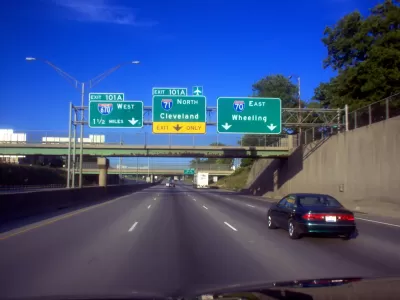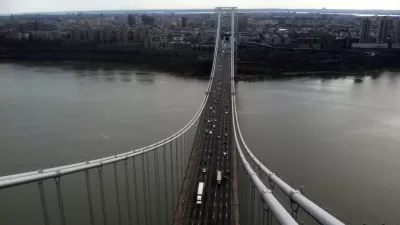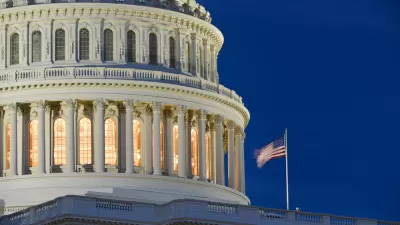While Congress debates its bipartisan infrastructure deal, a House-approved bill, the INVEST in America Act, waits in the wings with the potential to alter the direction of transportation planning in the United States.

"House Democrats are trying to use a massive climate and infrastructure bill to change how Americans get around — by breaking states’ decades-old fondness for building highways," writes Sam Mintz to sum up the stakes in the ongoing negotiations in Congress to finalize a bipartisan infrastructure bill.
Mintz is focusing on legislation approved in July by the House of Representatives—specifically, the $500 million INVEST in America Act (or federal transportation reauthorization) included in the larger "Moving Forward Act" infrastructure bill. According to Mintz, the INVEST in America Act has the potential to significantly shift infrastructure planning and funding in the United States, "baking climate policies into transportation." (The transportation sector is the largest source of greenhouse gas emissions in the United States.) The various layers of spending bills approved by the House also represent components of the American Jobs Plan proposed by the Biden administration in March with similar ambitions for changing the course of America's car-centric infrastructure tradition.
According to Mintz, the "INVEST in America Act" has encountered opposition from "state transportation departments and the road-building lobby." The U.S. Senate is working on a compromise, the Bipartisan Infrastructure Framework, that responds to some of those interests and could eventually influence the fate of the bill. Negotiations on Capitol Hill this week are reportedly not promising for the climate-friendly potential of the bill.
The purpose of Mintz's article is not to untangle the intricacies of Congressional lawmaking, but to reveal the history and consequences of the car-centric focus of U.S. transportation infrastructure planning and spending. "States have tended to use one primary strategy to tackle congestion: adding new highways or expanding existing ones," writes Mintz.
The aggregate evidence is staggering when considered in context of the scant signs of congestion relief and the encroaching realities of climate change: "From 1993 to 2017, states laid down 30,511 new miles of freeway lanes in the hundred largest urbanized areas — a 42 percent increase in highway capacity."
The INVEST in America Act would out a stop to the highway building proclivity by setting limits on the use of the National Highway Performance Program, asking states to "consider whether an 'operational improvement or transit project' would be more cost-effective than expanding capacity for single-occupancy vehicles," reports Mintz.
FULL STORY: Democrats look to crush states’ highway habit

Study: Maui’s Plan to Convert Vacation Rentals to Long-Term Housing Could Cause Nearly $1 Billion Economic Loss
The plan would reduce visitor accommodation by 25,% resulting in 1,900 jobs lost.

North Texas Transit Leaders Tout Benefits of TOD for Growing Region
At a summit focused on transit-oriented development, policymakers discussed how North Texas’ expanded light rail system can serve as a tool for economic growth.

Using Old Oil and Gas Wells for Green Energy Storage
Penn State researchers have found that repurposing abandoned oil and gas wells for geothermal-assisted compressed-air energy storage can boost efficiency, reduce environmental risks, and support clean energy and job transitions.

Santa Barbara Could Build Housing on County Land
County supervisors moved forward a proposal to build workforce housing on two county-owned parcels.

San Mateo Formally Opposes Freeway Project
The city council will send a letter to Caltrans urging the agency to reconsider a plan to expand the 101 through the city of San Mateo.

A Bronx Community Fights to Have its Voice Heard
After organizing and giving input for decades, the community around the Kingsbridge Armory might actually see it redeveloped — and they want to continue to have a say in how it goes.
Urban Design for Planners 1: Software Tools
This six-course series explores essential urban design concepts using open source software and equips planners with the tools they need to participate fully in the urban design process.
Planning for Universal Design
Learn the tools for implementing Universal Design in planning regulations.
Ascent Environmental
Borough of Carlisle
Institute for Housing and Urban Development Studies (IHS)
City of Grandview
Harvard GSD Executive Education
Toledo-Lucas County Plan Commissions
Salt Lake City
NYU Wagner Graduate School of Public Service





























